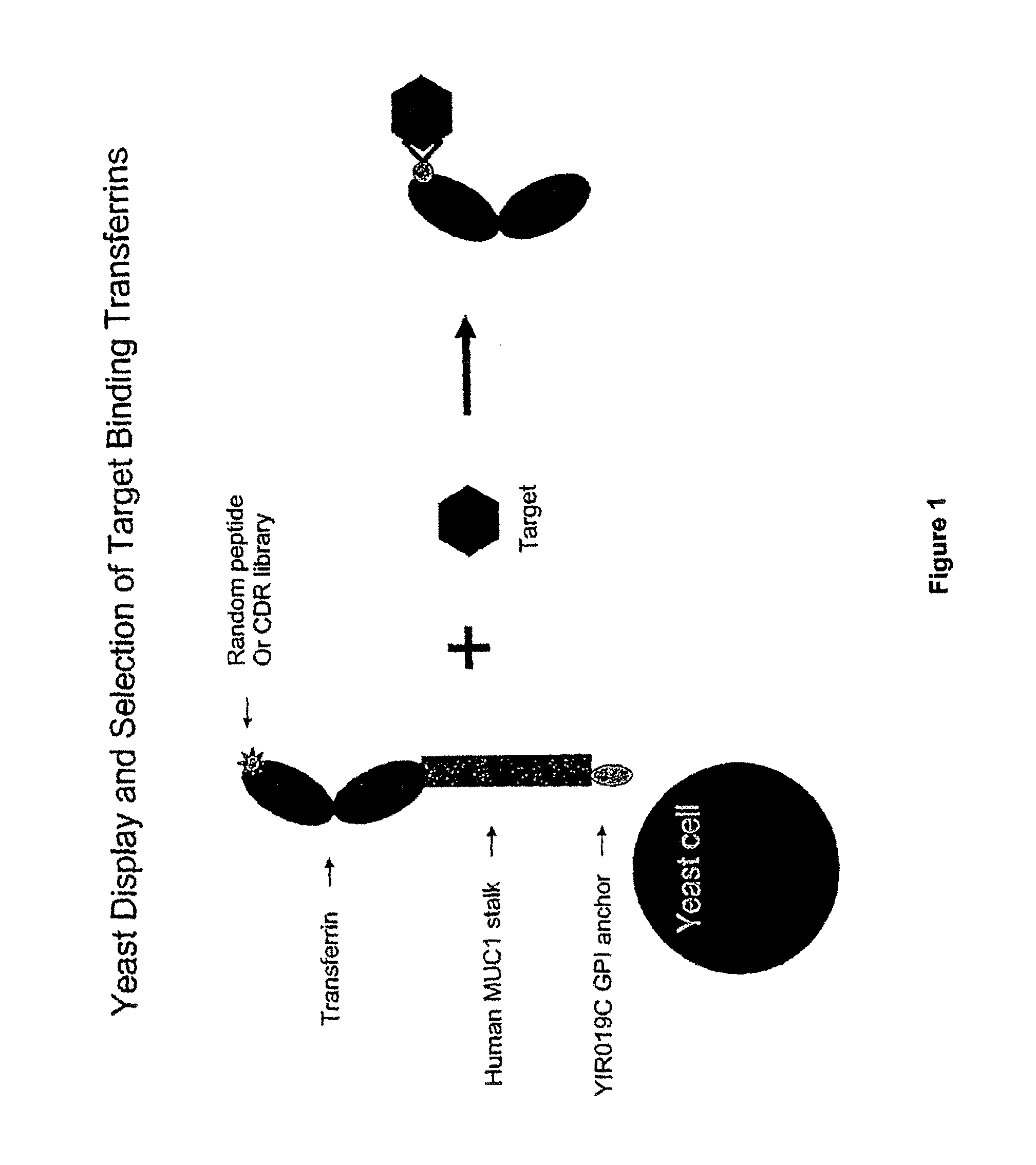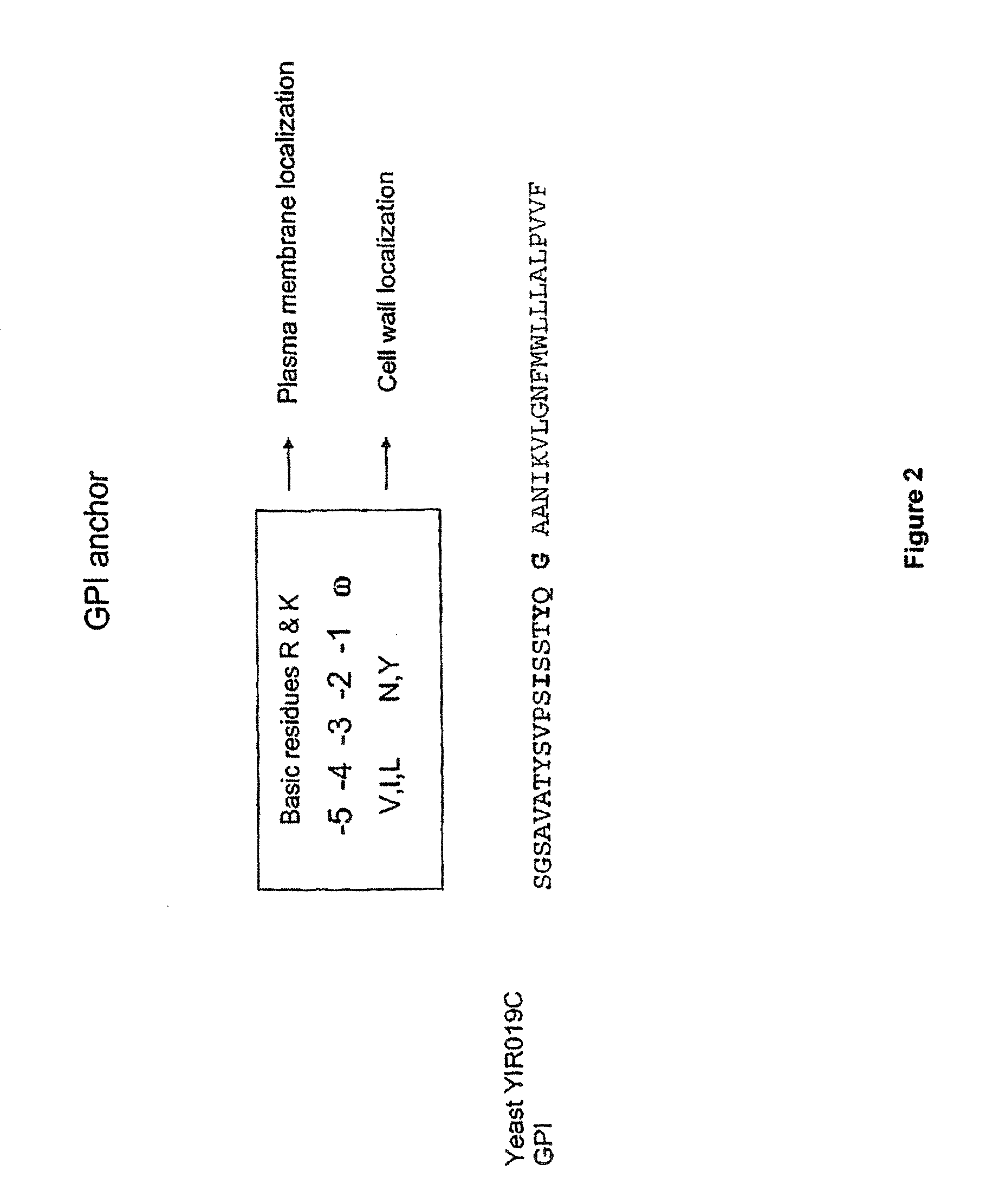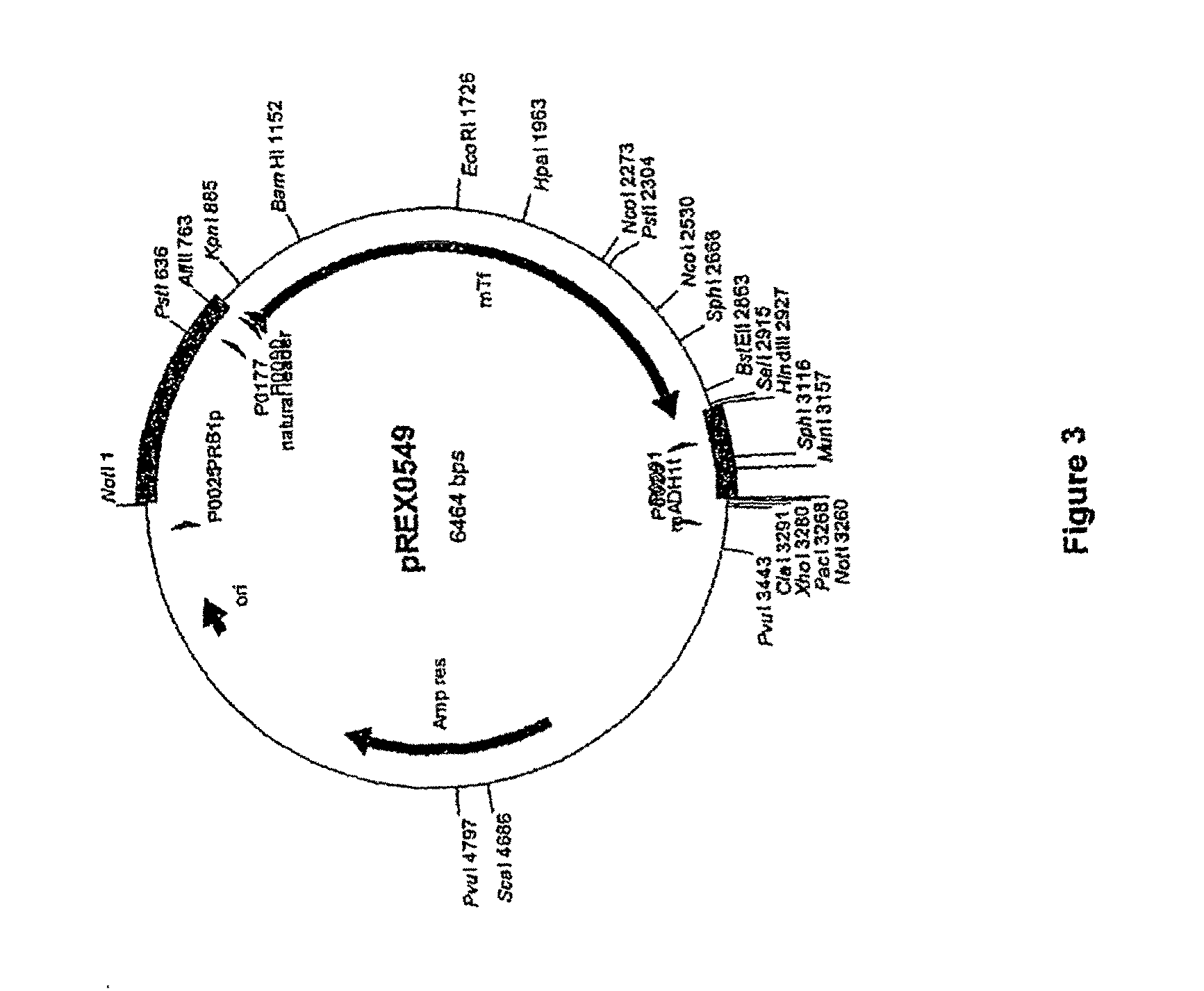Transferrin fusion protein libraries
a technology of transferrin and fusion protein, applied in the direction of dna/rna fragmentation, plant/algae/fungi/lichens ingredients, fungi, etc., can solve the problems of not being able to achieve the effect of existing yeast display technology, system cannot be used to select peptides, and low display efficiency, etc., to achieve the effect of reducing steric hindran
- Summary
- Abstract
- Description
- Claims
- Application Information
AI Technical Summary
Benefits of technology
Problems solved by technology
Method used
Image
Examples
example 1
Preparation of GPI Anchor, hMUC1, and mTF Expression Cassette
[0290]The pREX0549 vector containing a mTf expression cassette (SEQ ID NO: 16) was digested with SalI and HindIII. FIG. 3 provides a vector map for pREX0549. Primers P0922 and P0923 (SEQ ID NO: 7 and SEQ ID NO: 8) were annealed together and ligated into pREX0549 at the SalI / HindIII digestion site. The linker formed by P0922 and P0923 contained SpeI, HindIII, and XbaI restriction sites and was designed to accept a nucleic acid molecule coding for a GPI anchor and MUC1 stalk. The resulting vector, pREX0628, contained the mTf expression cassette with the P0922 / P0923 linker.
[0291]pREX0628 was digested with HindIII and XbaI. Primers P0924 and P0925 (SEQ ID NO: 9 and SEQ ID NO: 10) were annealed to form the GPI anchor YIR019c. YIR019c was ligated into the digested pREX0628 to create vector pREX0634.
[0292]hMUC1 cDNA was RT-PCR amplified from a human breast tumor total RNA library (Clontech) using primers P0958 and P0959 (SEQ ID N...
example 2
15-mer Random Library Construction
[0297]For selection of transferrin variants with novel binding characteristics, a random 15-mer library was constructed in the 289-290 amino acid position of transferrin through a PCR knitting procedure known in the art (see Martin and Smith (2006) Biochem J. 396(2): 287-95). A 15-mer library was designed even though only about 7 amino acids are usually needed to form a binding epitope, and a library of ˜109 only covers a small fraction of the designed library (3.3×1019). However, with a library size of 109, a 15-mer library covers 6.4 times more 7-mers than a 7-mer library of the same size.
[0298]After obtaining DNA fragment containing BamHI / BspEI sequence of transferrin using P1174 / P1227, two PCR reactions (each with a single primer—P1172 and P1173) were performed to obtain single strand DNAs. The ssDNAs were isolated and annealed to form a knitting 15-mer library. This operation ensured that the library maintained the original complexity of the sy...
example 3
Selection of Yeast Cells Displaying Flag
[0303]A yeast display system was established whereby the N-lobe of transferrin was displayed on the surface of yeast by fusion to a stalk region, huMUC1, and a GPI signal sequence. To demonstrate the utility of this system in binder selection, a Flag-tag sequence, DYKDDDDK (SEQ ID NO.: 23), or a random 15-mer peptide library was inserted at amino acid position 289 of the transferrin N-lobe. Yeast displaying the Flag-tagged transferrin N-lobe, pREX1012 (FIG. 6), were then spiked into a pool of yeast displaying the transferrin N-lobe with random 15-mer peptides. From this mixed population only yeast displaying the Flag-tagged transferrin N-lobe were recovered by selection with an anti-Flag antibody.
[0304]To insert the Flag tag sequence into amino acid position 289 of transferrin, oligos incorporating the Flag tag sequence were synthesized and PCR knitted into pREX0667 vector to generate pREX0759 (FIG. 7). The BamHI / BspEI fragment of pREX0759 con...
PUM
| Property | Measurement | Unit |
|---|---|---|
| molecular weight | aaaaa | aaaaa |
| half life | aaaaa | aaaaa |
| half life | aaaaa | aaaaa |
Abstract
Description
Claims
Application Information
 Login to View More
Login to View More - R&D
- Intellectual Property
- Life Sciences
- Materials
- Tech Scout
- Unparalleled Data Quality
- Higher Quality Content
- 60% Fewer Hallucinations
Browse by: Latest US Patents, China's latest patents, Technical Efficacy Thesaurus, Application Domain, Technology Topic, Popular Technical Reports.
© 2025 PatSnap. All rights reserved.Legal|Privacy policy|Modern Slavery Act Transparency Statement|Sitemap|About US| Contact US: help@patsnap.com



